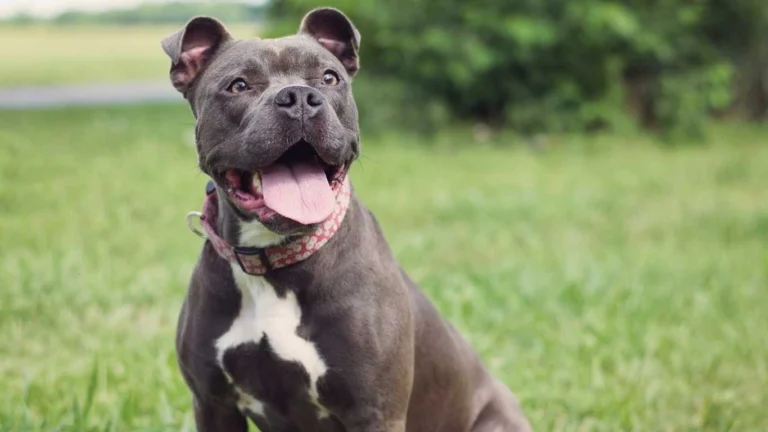Discover the Best Hypoallergenic Diets for Dogs to Improve Health Fast
When I first started working as a Veterinary Assistant, I never realized just how many dogs suffer from food allergies and sensitivities. It wasn’t just the occasional itchy paw or upset tummy—some of these pups were dealing with chronic ear infections, constant licking, and even hair loss. That’s when I really dove deep into canine nutrition, and let me tell you, finding the best hypoallergenic diets for dogs can be a total game-changer. Whether you’re dealing with a full-blown allergy or just trying to figure out what’s causing your pup’s discomfort, having the right diet makes all the difference.
What Exactly Is a Hypoallergenic Diet for Dogs?

Let’s clear this up first—”hypoallergenic” doesn’t mean allergy-proof. It just means the food is less likely to cause an allergic reaction. In practice, these diets are made to avoid common allergens and use ingredients that are less likely to trigger an immune response in sensitive pups.
From what I’ve seen firsthand at the clinic, hypoallergenic dog food usually falls into three categories:
- Limited Ingredient Diets (LID): These contain fewer ingredients to minimize the chances of a reaction. Often, they use novel proteins like duck, venison, or even kangaroo.
- Hydrolyzed Protein Diets: The proteins in these diets are broken down into smaller pieces that are less likely to be recognized by your dog’s immune system.
- Novel Protein Diets: These are based on protein sources your dog hasn’t eaten before, which helps reduce the chance of an immune response.
Common Symptoms That Signal a Food Allergy

It’s not always obvious when a dog is reacting to something in their food. A lot of pet parents come in thinking their dog has fleas or environmental allergies when it’s really the chicken or beef in their kibble causing the issue. Here are some telltale signs I’ve seen over and over:
- Chronic itching, especially around the face, paws, and belly
- Recurring ear infections (seriously, if you’re at the vet for ear gunk every month—look at the food!)
- Hot spots and inflamed skin
- Excessive licking or chewing, especially on the paws
- Gastrointestinal issues like vomiting, diarrhea, or soft stools
If your dog is showing any of these signs, it’s worth bringing it up with your vet and considering a diet change. We’ve had so many success stories at the clinic just by switching to an appropriate hypoallergenic formula.
Why So Many Dogs Are Reacting to Common Dog Foods

One of the things I learned early on in my job is how repetitive most commercial dog foods are when it comes to ingredients. Chicken, beef, wheat, dairy, and corn are everywhere. Even in foods labeled as “lamb and rice,” you’ll often find chicken fat or beef flavoring buried in the ingredients list.
This overexposure makes it more likely for dogs to develop sensitivities. Think about it—if you ate the same three things for every meal, every day, for years… you’d probably develop some issues too. With dogs, it can happen faster because their digestive systems are more sensitive than we think.
That’s why switching to the best hypoallergenic diets for dogs—ones that avoid those usual suspects—can give your pup’s body the break it needs to heal.
Veterinary Insight: What We Recommend in the Clinic
We typically recommend a 6-8 week elimination trial using a prescription hypoallergenic formula. During that time, no table scraps, treats (unless hypoallergenic), or flavored medications. And yes, that includes flavored heartworm chews—those are sneaky little allergy bombs sometimes.
If symptoms improve, it’s a strong sign the diet is working. Some of the brands we’ve had success with include:
- Royal Canin Hydrolyzed Protein – Great for dogs with severe allergies or complex cases.
- Hill’s Prescription Diet z/d – Another hydrolyzed option that’s palatable even for picky eaters.
- Natural Balance LID – Good over-the-counter option with simple ingredients.
- Acana Singles – Offers limited ingredient diets using novel proteins like duck and lamb.
But—and this is a big one—you’ve got to commit. I’ve seen pet parents give up halfway through or slip their dog a treat with chicken in it, and boom, symptoms are back. Consistency is absolutely key here.
Don’t Fall for Marketing Hype
One of the hardest parts of my job is watching people spend tons of money on “grain-free,” “holistic,” or “natural” foods that are still full of allergens. Grain-free doesn’t mean hypoallergenic. In fact, some grain-free formulas rely heavily on peas, lentils, and potatoes—which can also be problematic for some dogs.
Always, always read the ingredient list. If you’re not sure what you’re looking at, bring it to your vet or even your local pet nutrition consultant (like me!). We can help decode that label.
How to Transition Your Dog to a Hypoallergenic Diet

So, you’ve decided to make the switch to a hypoallergenic diet for your dog. Great choice! But here’s the thing—just like when we try a new diet ourselves, transitioning can take some time, and you want to do it gradually to avoid upsetting your dog’s stomach.
From my experience, I’ve seen it time and time again: the key to a smooth transition is patience and consistency. Here’s how I usually recommend going about it:
- Start Slow: Don’t just dump the new food into your dog’s bowl and call it a day. Start by mixing 25% of the new food with 75% of the old food for the first few days.
- Gradually Increase the New Food: Over the next 7-10 days, slowly increase the percentage of the new food while decreasing the old food. By the end of this period, your dog should be fully transitioned.
- Watch for Any Reactions: It’s normal for your dog to have a slightly upset tummy for a day or two. But if things don’t improve or symptoms worsen, you may need to consult your vet to see if the new food is suitable.
- Stick to the Plan: It’s tempting to give your dog treats or scraps during the transition, but sticking to just the hypoallergenic food for at least 6 weeks is critical to gauge effectiveness.
If your dog has a sensitive stomach, make sure to give them time to adjust. I’ve seen cases where pet parents didn’t give their dog enough time, and they thought the food wasn’t working, when really it just needed a bit more time to show results.
Understanding Ingredient Labels: What to Look for in Hypoallergenic Dog Food

Alright, let’s talk about ingredient labels—because let me tell you, they can be a bit of a maze if you’re not used to reading them. The key when looking for the best hypoallergenic diets for dogs is to find foods with simple, clear ingredients that are easy for your dog’s system to process.
Here are some essential things I’ve learned over the years to help you decode the label:
1. Limited Ingredients
The fewer ingredients, the better. A simple formula helps reduce the likelihood of an allergic reaction because your dog is exposed to fewer potential allergens. Look for foods that list a single protein source, like duck, venison, or salmon, along with a limited carbohydrate source like sweet potato or peas.
2. Novel Proteins
Novel proteins are proteins that your dog hasn’t had before. If you’ve been feeding your dog beef or chicken for years, their body might have developed an immune response to these proteins. By switching to something new like kangaroo or rabbit, you’re giving your dog a fresh start. The fewer ingredients your dog has been exposed to, the better the chance of identifying the culprit.
3. Hydrolyzed Proteins
If your dog has severe allergies, hydrolyzed proteins are a fantastic option. These proteins are broken down into very small fragments, so your dog’s immune system doesn’t recognize them as allergens. Hydrolyzed foods are often prescribed by vets because of their effectiveness in managing food sensitivities.
4. Grain-Free Doesn’t Always Mean Hypoallergenic
Here’s a little myth buster: just because a dog food is labeled grain-free doesn’t mean it’s hypoallergenic. Some dogs can be allergic to the high levels of peas or potatoes that are often used in grain-free formulas. If your dog is reacting to a grain-free diet, it might be a sensitivity to these ingredients instead. Always read the full ingredient list!
5. Avoid Fillers and By-products
Avoid foods that contain “by-products” or “fillers” like corn or soy. These are cheap fillers that often don’t provide the nutritional value your dog needs, and they can even contribute to allergies. Opt for foods that use whole, recognizable ingredients.
Best Hypoallergenic Diets for Dogs: What’s Out There?

Now, let’s get into some of the top hypoallergenic dog food options out there. As a Veterinary Assistant, I’ve seen firsthand which brands work well for pups with food sensitivities. Keep in mind that what works for one dog may not work for another, but here are some of the ones I trust the most:
1. Royal Canin Veterinary Diet Hydrolyzed Protein
This food is often prescribed by vets for dogs with food allergies. It uses hydrolyzed proteins, which are great for dogs with sensitive stomachs or severe food sensitivities. It’s a bit on the pricier side, but for dogs with serious allergies, it’s worth it.
2. Hill’s Prescription Diet z/d
Hill’s z/d is another prescription option that’s formulated specifically for dogs with food sensitivities. It’s got hydrolyzed proteins and is designed to help manage food allergies. Plus, it’s got a nice balance of fiber and omega-3 fatty acids to help with skin health, which is often a problem for dogs with food allergies.
3. Natural Balance LID (Limited Ingredient Diet)
Natural Balance’s LID formulas are one of the best over-the-counter options. They’re made with a limited number of ingredients, and they use novel proteins like duck and venison. It’s a great option if you’re looking for something a little less expensive than the prescription options but still effective.
4. Acana Singles + Nutrition
Acana’s Singles line uses just one protein and one carbohydrate source in each recipe, which is perfect for dogs with allergies. Their formulas are high in protein and fat, which means they’re also great for active dogs. Acana is a fantastic brand that’s highly trusted by pet owners and vets alike.
5. Blue Buffalo Basics
Blue Buffalo Basics offers limited ingredient diets that are designed for dogs with food sensitivities. Their formulas often use turkey or salmon as a protein source and come with added probiotics for digestive health. It’s a good option for dogs that don’t have severe allergies but still need a food with fewer ingredients.
These are just a few of the options, but there are many others out there. The best way to find the right food is through trial and error, with guidance from your vet.
How to Monitor Your Dog’s Progress on a Hypoallergenic Diet

Alright, now that you’ve made the switch to a hypoallergenic diet for your dog, you might be wondering: “How do I know if it’s working?” Well, there are a few things to keep an eye on. You’ll need to monitor their progress closely over the next several weeks to see how they’re responding. Here’s what I look for when evaluating a dog’s improvement:
1. Skin Condition
One of the first things I notice in the clinic when a dog is transitioning to a hypoallergenic diet is how quickly their skin condition starts to improve. If your dog’s itching and licking has decreased significantly within the first few weeks, that’s a sign the diet is starting to work. The absence of those red, inflamed patches of skin can be incredibly relieving—for both you and your dog!
2. Coat Quality
If your dog had dry, flaky skin before, you should start to notice a shinier, healthier coat within a month or so. I’ve seen dogs go from having dull, dry fur to a soft, glossy coat after just a few weeks on the right food. Plus, shedding may decrease as your dog’s skin becomes healthier.
3. Digestive Health
Changes in bowel movements are another indicator. If your dog had frequent diarrhea, bloating, or gas, these symptoms should start to improve once they’re on a proper hypoallergenic diet. Regular, firm stools are usually the goal. Keep an eye out for any signs of upset digestion, though—if things aren’t getting better or if your dog starts vomiting, it could be a sign that the food is not agreeing with them. Don’t hesitate to check in with your vet in these cases.
4. Energy and Behavior
Something that I find often gets overlooked is how much a hypoallergenic diet can impact a dog’s energy level. Many times, food allergies or sensitivities can cause discomfort, leading to lethargy or mood changes. When you remove those allergens from the equation, it’s like a cloud lifts. Your dog may have more energy and seem happier overall, especially if they were previously in discomfort. If they seem to have more spring in their step or are more playful, it could be a sign the diet is working!
5. Ear Infections and Other Symptoms
If your dog struggled with chronic ear infections, you should see a noticeable reduction in these symptoms after switching to a hypoallergenic food. Ear infections are often a sign of food allergies in dogs, and the right diet can prevent those itchy, painful flare-ups from happening again.
When to Consult Your Vet
As much as we love to help our pups feel better on our own, there are definitely times when it’s crucial to consult with your vet during this transition period. Even though a hypoallergenic diet can work wonders, sometimes it’s not a magic fix, and your dog might need further support. Here’s when it’s time to reach out:
- If symptoms don’t improve: If after 6-8 weeks you’re not seeing any improvement in your dog’s skin, coat, or digestive health, it may be time for a second opinion or a new approach.
- If symptoms get worse: If your dog starts to show new symptoms or gets worse after starting a hypoallergenic diet, consult with your vet. It could mean that the diet isn’t working or your dog has other underlying issues.
- If you need a prescription food: Sometimes, over-the-counter hypoallergenic foods just aren’t enough for dogs with severe allergies. In these cases, your vet might prescribe a specialized food.
- If your dog needs allergy testing: If you’re unsure about what exactly your dog is allergic to, your vet may recommend allergy testing to help pinpoint the culprit and choose the best hypoallergenic diet.
Remember, a good relationship with your vet is key to ensuring that your dog’s hypoallergenic diet is working as it should. Don’t hesitate to reach out for support or guidance—it’s a partnership in keeping your dog happy and healthy!
Some Final Thoughts on Hypoallergenic Diets for Dogs
Hypoallergenic diets aren’t just a passing trend in the world of dog food—they’re an essential tool for managing food sensitivities and allergies that can really impact your dog’s quality of life. From my experience working with dogs at the clinic, I’ve seen just how transformative the right food can be. It’s not just about giving your dog a new diet; it’s about giving them relief from discomfort, better health, and a happier life.
However, just as every dog is unique, the best hypoallergenic diet for your dog will depend on their specific needs. It might take some time, patience, and trial and error to find the right formula, but rest assured that with persistence, you can find a food that works for them. If you ever feel unsure, don’t hesitate to consult with a pet nutritionist or a vet to make the best decision for your pup’s well-being.
In the end, a hypoallergenic diet can help alleviate your dog’s symptoms and give them the quality of life they deserve. It’s all about creating a balanced, healthy lifestyle for your furry friend, so they can live a long, happy life by your side.
References:
- American Kennel Club – Canine Nutrition
- PetMD – Dog Health and Nutrition
- National Institutes of Health – Animal Allergy Research
- Health – General Health and Wellness Articles
Disclaimer:
The information provided in this article is based on my personal experience as a Veterinary Assistant and my understanding of canine nutrition. It is not intended to replace professional veterinary advice. Always consult with your veterinarian before making any significant changes to your dog’s diet or health care routine.






